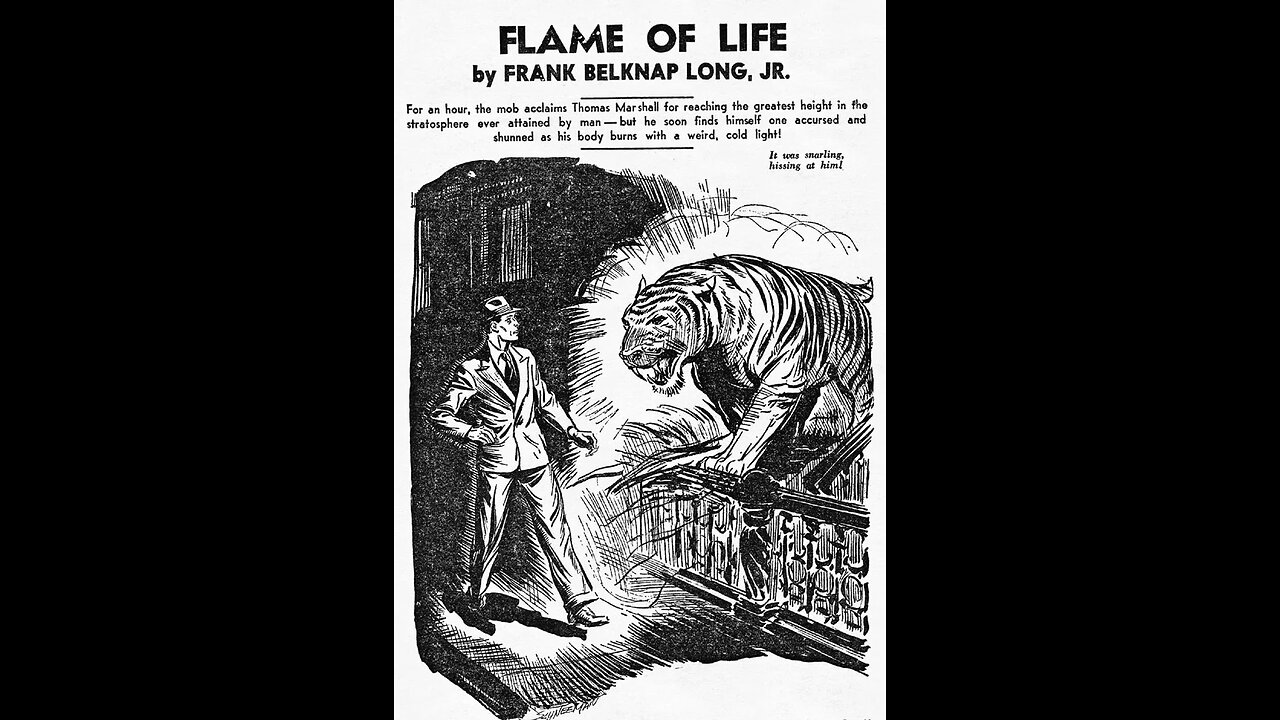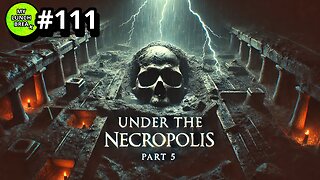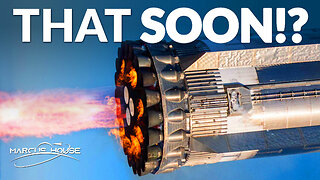Premium Only Content

"Flame of Life" by Frank Belknap Long
Published in 1939
53,000 miles = 85,300 kilometers
The moon is 238,900 miles, so we're 22% of the way to the moon! The ionosphere covers the range of 30 to 600 miles. The word 'ionosphere' was invented in 1926, and its existence was confirmed in 1927, including its height and density. So by 1939, this was all old hat, yet for some reason Long gets it very wrong here. Weird.
The Mauve Decade: the 1890s. So-called because of how popular the use of the color mauve had become in fashionable clothing.
Georgian architecture covers the period from 1714 to 1830, names after the first four King Georges.
periwig: a wig, especially a highly styled one, which in the Georgian period would be a white powdered wig. This went out of fashion in the mid-18th century and all but disappeared by the start of the 19th century.
frog: in the context of clothing, an ornamental braiding used to fasten the front of a garment and consist of a button on one side, with a loop to pass through on the other.
Dr. Crille: this appears to be a made-up person? Given the absurdity of the theory proposed, I can believe he wouldn't want to attribute it to a real person.
Einstein, on the other hand, we all know who that is. But Eddington and De Sitter? Hmmm...
Eddington: Sir Arthur Stanley Eddington, an English astronomer, physicist, and mathematician active in the early to mid 20th century. We get the Eddington limit from him, the natural limit to the luminosity of stars. He speculated on the existence of fusion in stars.
De Sitter: Willem de Sitter, a Dutch astronomer, physicist, and mathematician of the late 19th and early 20th century. He co-authored a paper with Einstein dealing with the curvature of the universe. We get the ideas of de Sitter space and the de Sitter universe from him.
Long uses British spellings in the text rather than American ones, like kerb instead of curb, or tyre instead of tire. We can see this was written right before WW2, but I would not have guessed Americans were still using British spellings at that point. Hmmm...
The picture used is an illustration by Charles Schneeman for the story as it appears in "Science Fiction", October 1939.
-
 54:05
54:05
TheGetCanceledPodcast
17 hours ago $13.20 earnedThe GCP Ep.11 | Smack White Talks Smack DVD Vs WorldStar, Battle Rap, Universal Hood Pass & More...
120K19 -
 13:37
13:37
Exploring With Nug
21 hours ago $8.02 earnedSUV Found Underwater Searching For Missing Man Jerry Wilkins!
80.6K4 -
 2:58:21
2:58:21
xBuRnTx
16 hours ago1st Warzone Stream Online
74.6K7 -
 6:10:21
6:10:21
JdaDelete
1 day ago $21.52 earnedDino Crisis - Sega Saturday
148K5 -
 23:22
23:22
MYLUNCHBREAK CHANNEL PAGE
1 day agoUnder The Necropolis - Pt 5
117K59 -
 2:26:11
2:26:11
Jewels Jones Live ®
2 days agoWINNING BIGLY | A Political Rendezvous - Ep. 108
169K50 -
 2:04:49
2:04:49
Bare Knuckle Fighting Championship
4 days agoBKFC FIGHT NIGHT MOHEGAN SUN FREE FIGHTS
91.1K7 -
 25:09
25:09
BlackDiamondGunsandGear
19 hours agoYou NEED to be Training For Whats to Come
62.9K11 -
 20:03
20:03
Sideserf Cake Studio
1 day ago $2.01 earnedA HUNGRY HUNGRY HIPPOS CAKE THAT ACTUALLY WORKS?
57.1K14 -
 23:51
23:51
marcushouse
1 day ago $2.06 earnedStarship’s Next Move Is Coming Sooner Than You Think!
42.9K7